Rooftop Decking: Taking Your Massachusetts Outdoor Space to New Heights
Are you looking for a way to increase your living space without breaking the bank or committing to a full-scale addition? I’ve got just the solution for you: a rooftop deck! Not only will it increase your home’s value, but it’s the perfect place to host friends and family, relax after a long day, or take in the stunning views.
When it comes to planning your rooftop retreat, be sure to look into porcelain tiles and concrete pavers—great options for tackling the unique demands of a rooftop installation.
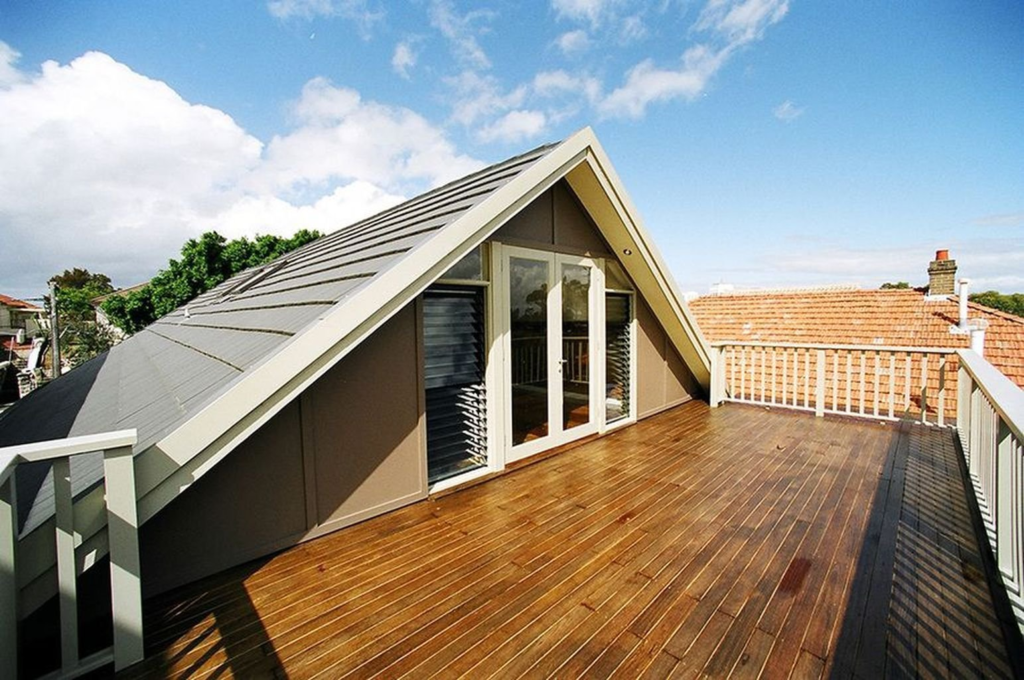
Why Roof Top Decking?
Roof top decking is super popular, and for great reason! It’s a wonderful way to increase your home’s livable space without adding on or expanding your footprint—if you have a flat roof, that is.
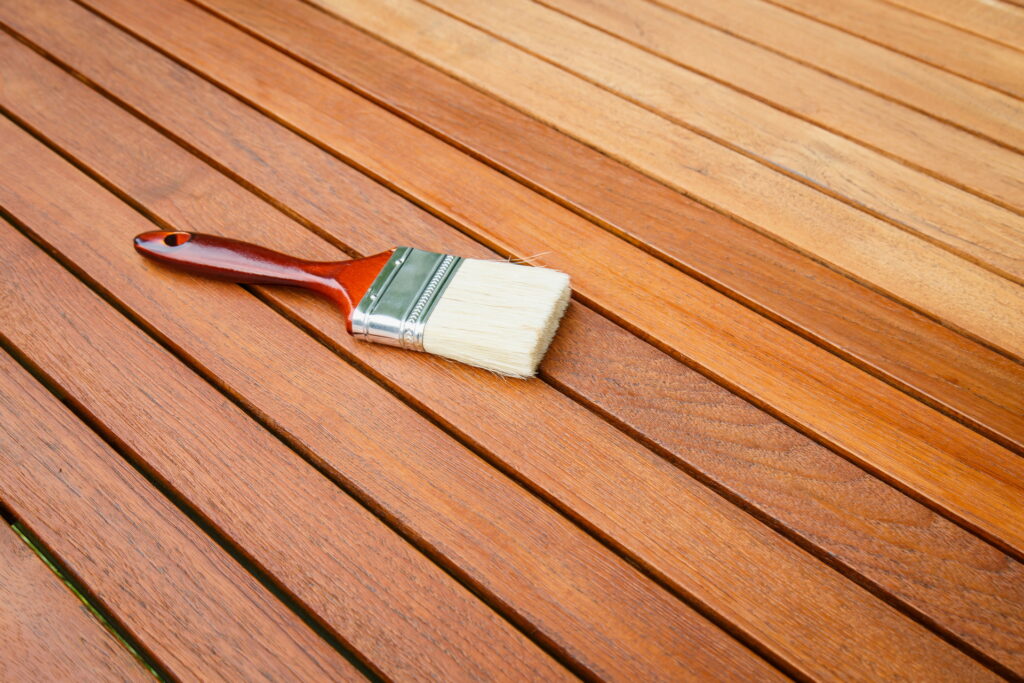
A privacy wall and open-air design make rooftop decks perfect for taking in the views, and they offer a more laid-back atmosphere than traditional patios. Not to mention, playing around with different rooftop deck flooring ideas can turn your space into a cozy retreat.
How to Build a Roof Top Deck
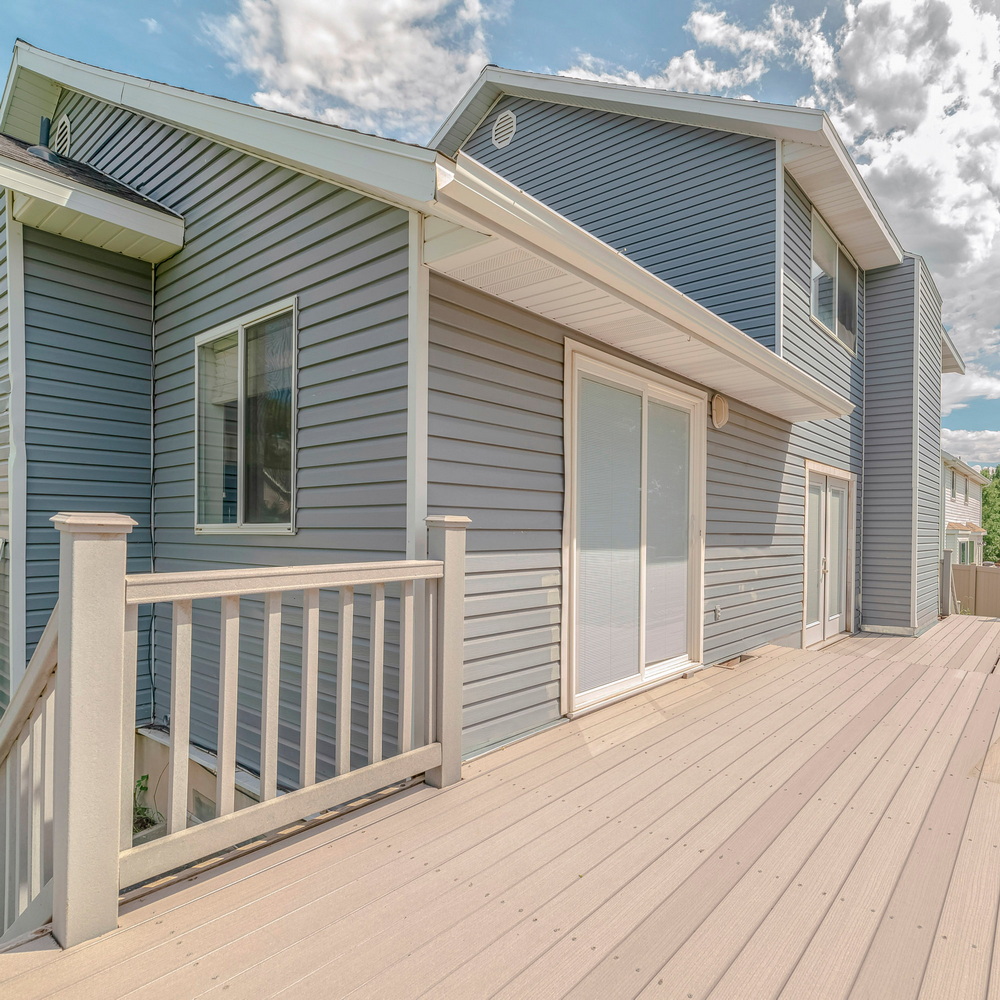
Before you start building, be sure your roof frame is sturdy enough to hold the weight of your new deck. You’ll also want to contact your local building department to obtain the necessary permits and comply with local building codes. Here are a few things to consider as you plan your rooftop deck.
Local Building Codes & Permits

Before you start planning, be sure to contact your local building department.
Rooftop decks have different city regulations, including setback requirements and square footage limits. It’s always better to check before you leap!
How to Frame a Roof Top Deck
When it comes to constructing your rooftop deck, you have a few options. Built-up roofs are common in urban areas and consist of a waterproof membrane covered in insulation and protected by a layer of gravel or pavers. Your deck framing design will impact your decking choice—wooden deck tiles or full-length decking boards—since it will determine which products are best suited for your rooftop installation.
Floating Deck
On the other hand, floating decks are a great option, too! A floating deck isn’t attached to your roof and is instead supported by adjustable concrete pedestals.
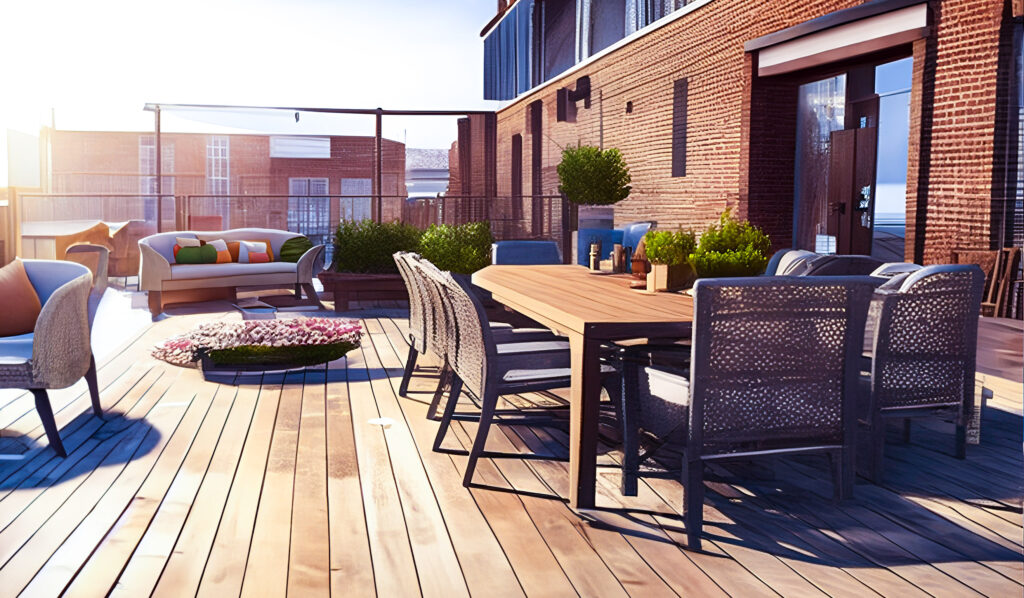
What is Roof Decking Made Of?
Now, let’s get to the good stuff—selecting your roofing material! You have a variety of options, but here are a few of our favorite deck roofing materials that strike a balance between durability and style.
Built-Up Roofs (BUR)
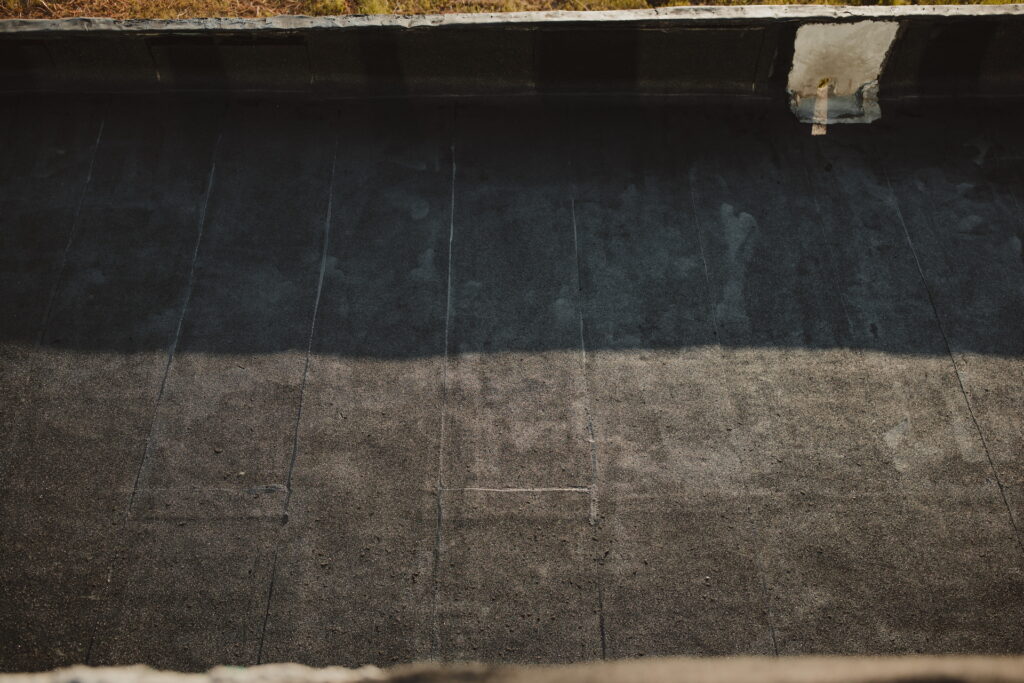
Built-up roofs are the most traditional type of roof used for decks. Roof tiles, known for their durability and ease of installation, are also a popular choice for various rooftop systems. They consist of several layers of roofing felt and hot-mopped asphalt or coal tar.
BUR is an affordable option but has a shorter lifespan than other materials.
Pressure-Treated Wood

If you’re looking for a rustic look and a budget-friendly price tag, pressure-treated wood is a great choice.
It weathers to a beautiful silver gray patina and is insect-resistant, making it a great option for structurally sound decks.
Just be sure to maintain it regularly, and it will serve you well. Keep in mind that it can be damaged by water and is prone to warping.
Composite Decking Material
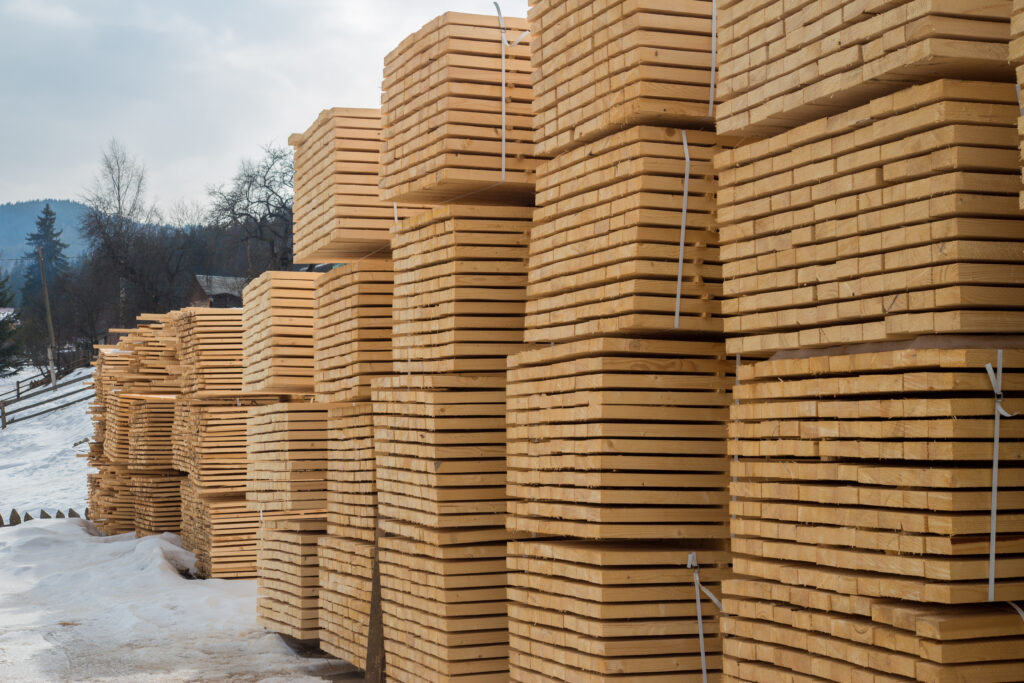
If you’re looking for a low-maintenance option with a little more durability, composite decking is a great choice.
Made from a combination of plastic and real wood fibers, it resists fading, staining, and mold and mildew.
It’s also resistant to insect damage and rot. However, it’s a bit pricier than other options, so be sure to factor that into your budget.
Rooftop Deck Ideas & Designs
The best part about a rooftop deck is that it can be designed to fit your personal style and lifestyle. Rooftop tiles come in various materials, including PVC and rubber, so you can enjoy both form and function. Here are a few ideas to get you started:
Rooftop Outdoor Living Space

Turn your rooftop deck into an outdoor living or dining space by adding comfortable furniture, colorful potted plants, and string lights. A fire pit or fireplace can warm up the space on chilly nights.
Built-in Benches

If you’re designing a rooftop dining space, consider built-in benches. They’re a great way to save space and offer comfortable seating for your guests.
How to Build a Roof Top Deck in Massachusetts

A rooftop deck is a wonderful way to increase your outdoor living space in Massachusetts. Not only will it provide a relaxing retreat and additional entertaining space, but it will also increase your home’s value.
Before you start planning, be sure to check out a few things.
What is Decking Made Of?
Your decking material is important. You have a few options, each with its own set of benefits and drawbacks. Rubber tiles, for example, are durable and allow water to drain right through, making them a great option for structural integrity and weather resistance.
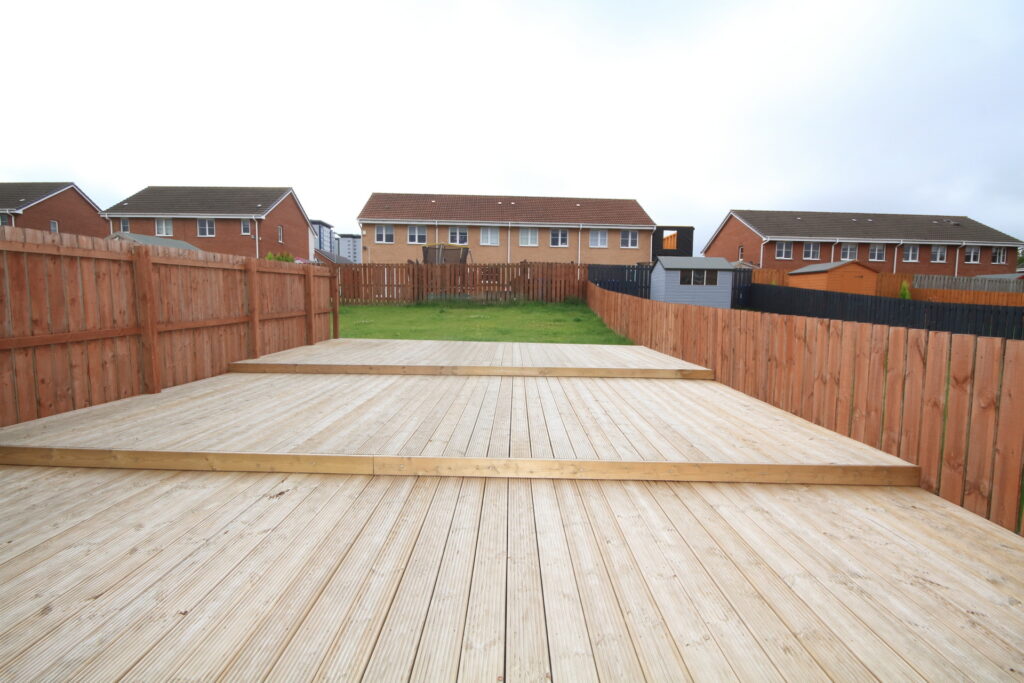
A few of our favorite decking materials include pressure-treated wood, composite decking, and PVC decking. Pressure-treated wood is a budget-friendly option that’s low maintenance. Composite decking is made from a combination of wood fibers and recycled plastic, making it resistant to water damage and insects.
PVC decking is lightweight and stays cooler in the summer sun, and it’s available in a wide range of colors and styles to mimic the look of real wood.
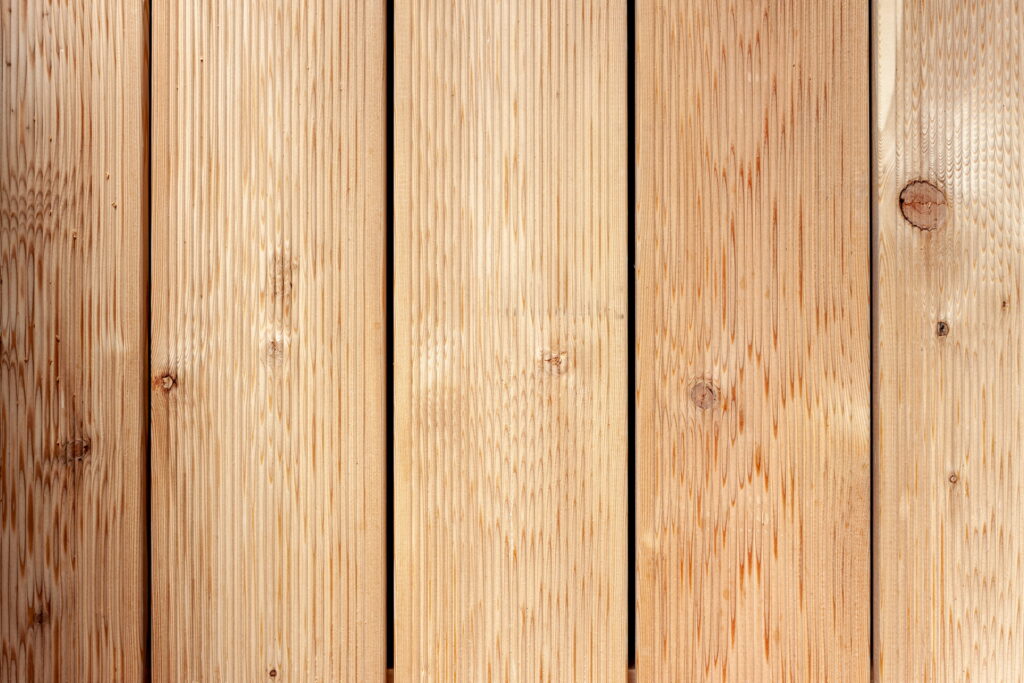
PVC decking’s unique composition also allows for a wide range of aesthetic options, including various colors and textures that mimic the look of natural wood.

This versatility ensures that homeowners can choose a style that aligns with their personal preferences and the overall design of their home. Additionally, PVC decking is known for its longevity and can withstand the harsh, varying weather conditions often experienced in Massachusetts.
This makes it an ideal choice for those looking to invest in a long-lasting rooftop deck without compromising on style or enduring frequent maintenance. However, it’s important to note that PVC decking can be more expensive upfront than other deck tiles or materials. Still, its durability and low maintenance requirements can save costs over time.
How to Design a Roof Top Deck

Now that you’ve selected your decking material, it’s time to design your rooftop deck. How do you want to use your space?
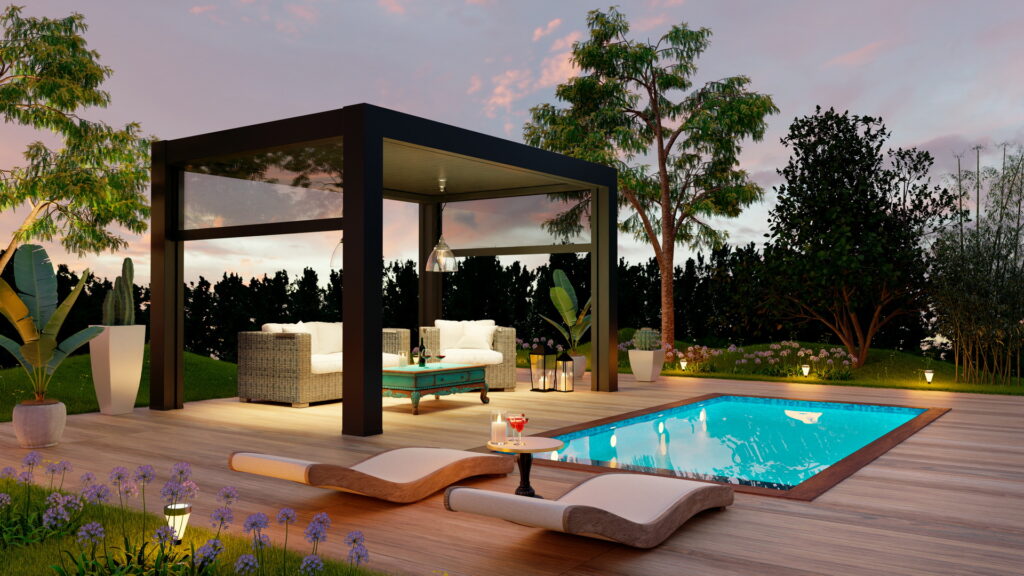
- What’s the square footage of your roof?
- Do you want to create a cozy seating area?
- A pergola for shade?
Lighter Deck Colors
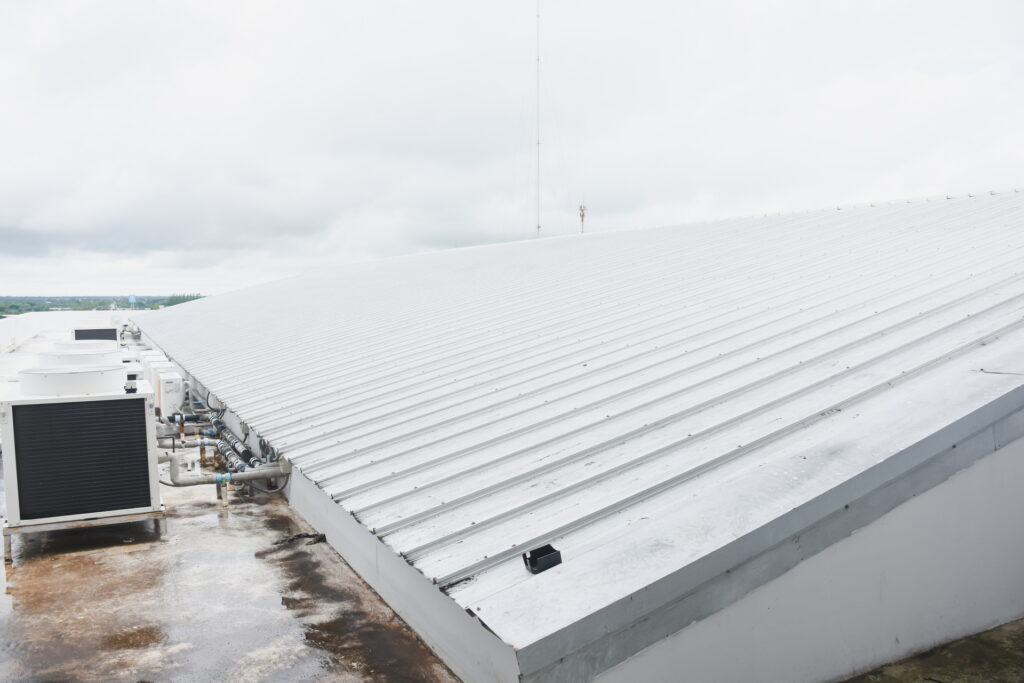
When it comes to rooftop deck ideas, lighter colors are your friend. Darker colors absorb heat, making them hot to walk on barefoot, while lighter colors reflect heat, keeping your space cooler.
On the other hand, lighter colors reflect more heat, making them more comfortable to walk on and less likely to retain heat.

How to Protect Your Roof

Be sure to protect your roof! Flat roof decks and built-up roofs are the most common choices, but they require special care to prevent water damage. Be sure your deck is installed correctly to allow for proper drainage, and consider adding a rubber membrane or protective layer underneath to prevent water from seeping into your roof.
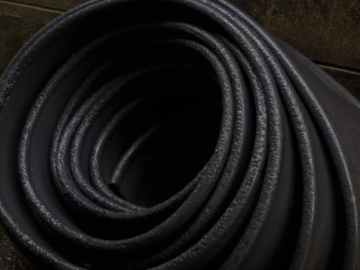
Drainage is important, too. Poor drainage can cause water to pool, and that can cause serious damage to your deck and your roof. A slight slope in your deck design can help water run right off, and regular maintenance—clearing debris from drains, for example—is important to ensure everything stays in good working order.
Weight is also important to consider. Your existing roof structure must be able to support the weight of your new deck, as well as your furniture and guests. A structural engineer can help you determine if your roof is able to support a rooftop deck, and if any reinforcements are necessary.

Finally, be sure to check your local building codes. These codes can be very specific about rooftop decks, especially when it comes to safety features like railings and fire exits. Not only is safety important, but complying with these codes can protect you from potential legal issues down the road.
By considering these factors, you can design a beautiful and safe rooftop deck.
What are Local Building Code Requirements?
Check your local building codes before starting your rooftop deck project. Building codes vary from city to city and state to state, so ensuring your rooftop deck designs meet all local safety requirements is essential.
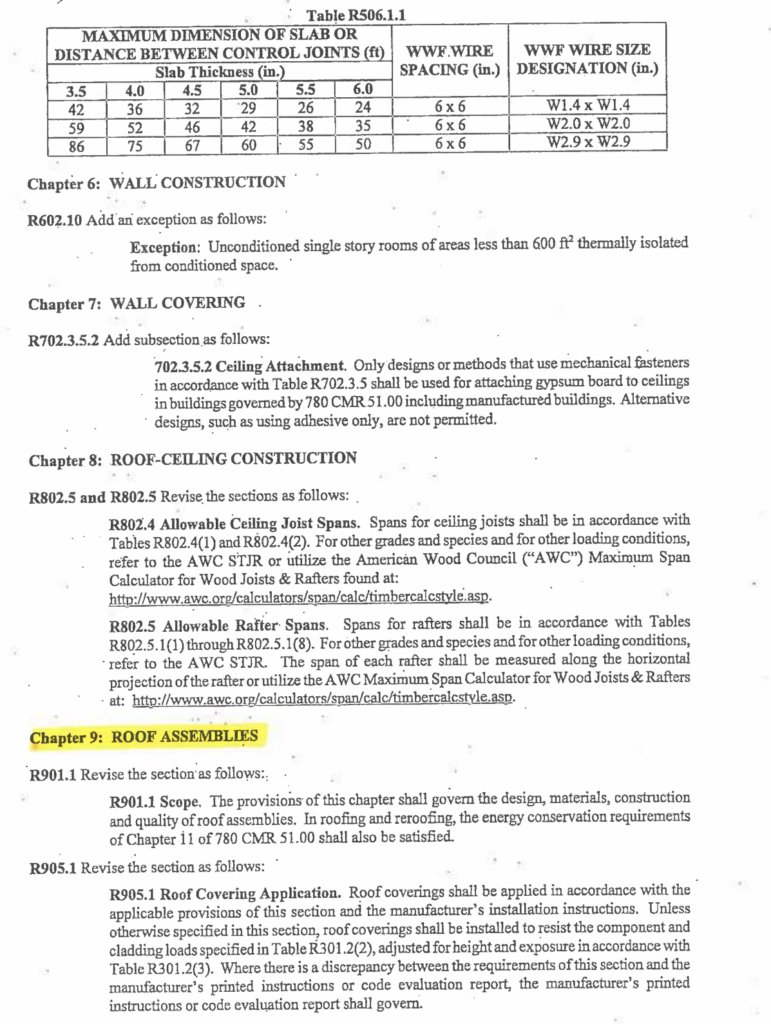
How to Maintain a Roof Top Deck
Once your rooftop deck is complete, regular maintenance is important to keep it in great shape. Here are a few tips:
- Sweep your deck regularly to remove debris and leaves.
- Watch for water damage and address it right away.
- Power wash your deck to remove dirt and grime.
- Seal your deck every few years to protect it from the elements.

Conclusion
A rooftop deck is a beautiful way to increase your outdoor living space in Massachusetts. By selecting the right decking material, designing your deck to fit your lifestyle, and protecting your roof, you can create a beautiful and functional outdoor retreat that increases your home’s value and your quality of life. So, get ready to enjoy the great outdoors from the comfort of your very own rooftop retreat!



